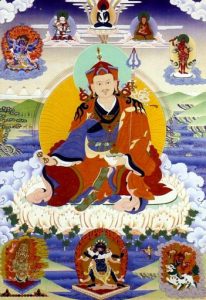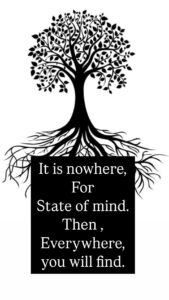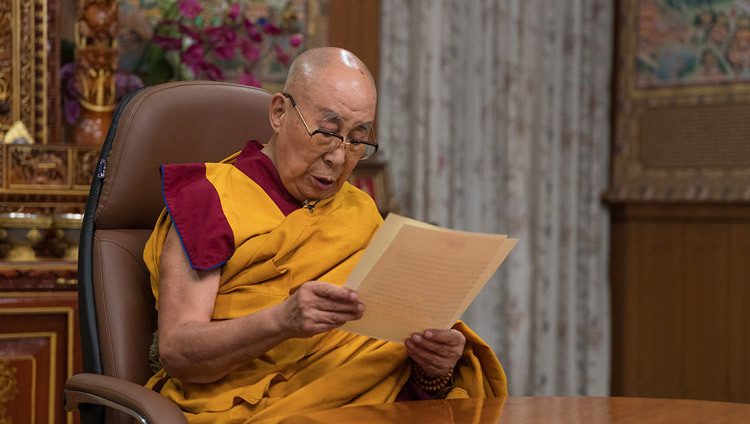
Praxis Buddhist Lunar Observance
| 🌒 1 | 2 | 3 | 4 | 🪷 5 | 6 | 7 |
| 🌓 8 | 9 | ☸️ 10 | 11 | 12 | 13 | 14 |
| 🌕 🪷 15 | 16 | 17 | 18 | 19 | 20 | 21 |
| 🌗 22 | 23 | 24 | ☸️ 25 | 26 | 27 | 28 |
| 🌑 29 / 30 |
KEY:
🌒 Waxing Crescent
🌓 First Quarter
🌕 Full
🌗 Second Quarter
🌑 New
☸️ Tsog Offering of the Guru Puja
🪷 Celebrating HH the Dalai Lama (5th)
🪷 Celebrating Buddha’s Birth, Enlightenment, Parinirvana (15)
Uposatha
During each of the four lunar phases observance of the Eight Precepts.
Abstinence from:
- taking life
- taking what is not given
- unchastity
- false speech
- intoxicants which cause a careless frame of mind
- taking food at the wrong time
- dancing, music, visiting shows, flowers, make-up, the wearing of ornaments and decorations
- tall, high sleeping place
Praxis Orphic Lunar Observance
| 🌒⛎ 1 | ⛎ 2 | ⛎ 3 | ⛎ 4 | 5 | ⛎ 6 | ⛎ 7 |
| 🌓⛎ 8 | 9 | 10 | 11 | ⛎ 12 | 13 | 14 |
| 🌕⛎ 15 | ⛎ 16 | 17 | 18 | 19 | 20 | 21 |
| 🌗 22 | 23 | 24 | 25 | 26 | 27 | ⛎ 28 |
| 🌑⛎ 29/30 |
KEY:
🌒 Waxing Crescent
🌓 First Quarter
🌕 Full
🌗 Second Quarter
🌑 New
☸️ Orphic Observance
Orphic Observance
Hymns From:
| Day | Hymn | Prayer To |
|---|---|---|
| 29/30 1 | 2 | Hekate |
| 1 | 1 | Musaeus |
| 2 | 73 | The Daemon, or Genius |
| 3 | 32 | Pallas Athena |
| 4 | 12 28 55 58 | Hercules Mercury/Hermes Venus/Aphrodite Cupid/Eros |
| 6 | 36 | Diana/Artemis |
| 7 | 33 | Apollo |
| 8 | 16 | Poseidon |
| 12 | 12 | Saturn/Kronos |
| 15 | 48 | Sabasius |
| 16 | 54 | Silenus, Satyrus, and the Priestesses of Bacchus |
| 28 | 84 85 86 | Hypnus/Sleep The Oneiri/Dreams Thanatus/Death |
1: Eve of New Moon
Mahabodhi

May all find
Refuge from suffering
Readily as seeking
Shelter in shade
neath canopy a tree.
Statement by H.H. Dalai Lama

“The process by which a future Dalai Lama is to be recognized has been clearly established in the 24 September 2011 statement which states that responsibility for doing so will rest exclusively with members of the Gaden Phodrang Trust, the Office of His Holiness the Dalai Lama. They should consult the various heads of the Tibetan Buddhist traditions and the reliable oath-bound Dharma Protectors who are linked inseparably to the lineage of the Dalai Lamas. They should accordingly carry out the procedures of search and recognition in accordance with past tradition.”
H.H. Dalai Lama
“I hereby reiterate that the Gaden Phodrang Trust has sole authority to recognize the future reincarnation; no one else has any such authority to interfere in this matter.”
Full: Statement Affirming the Continuation of the Institution of Dalai Lama
(dalailama.com)
Praxis in Path of Transference
Part Three: “The Swift Path of Transference“
Chapter One: “TRANSFERENCE OF CONSCIOUSNESS, THE INSTRUCTIONS FOR THE DYING: BUDDHAHOOD WITHOUT MEDITATION“
3.2 THE MAIN VISUALIZATION
Visualize that your ordinary body,¹ (footnotes) in an instant, becomes that of Vajra Yogini. She is red, with one face and two arms, standing with her two legs together, her right foot raised in the “walking posture.” Her three eyes are looking up toward the sky. For the purposes of these instructions on transference, visualize her with an attractive expression, at once peaceful and slightly wrathful. With her right hand high in the air, she rattles the small skull-drum that awakens beings from the sleep of ignorance and confusion. With her left she holds at her hip the curved knife that severs the three poisons at the root. She is naked except for a garland of flowers and ornaments of bone. Like a tent of red silk, she appears but has no substance or reality. All this is the outer empty enclosure of the body.
Running down the centre of your erect body, visualize the central channel, like a pillar in an empty house. It is called the “central” channel because it stands in the very axis of the body, without leaning to the left or the right. It has four characteristics. It is blue like a film of indigo, symbolizing the unchanging dharmakaya, Its fabric is as fine as a lotus petal, symbolizing the tenuousness of the obscuring veils arising from habitual tendencies. It is as bright as the flame of a sesame-oil lamp, symbolizing the dispelling of the darkness of ignorance. And it is as straight as a segment of bamboo, indicating that it never leads to lower or wrong paths. Its upper end opens straight out into the aperture of Brahma on the top of the head, like an open skylight, to symbolize that it is the pathway to liberation and higher rebirths, while its lower end is closed off four fingers below the navel without any opening, to symbolize that all access to samsara and lower rebirths is sealed. All this is the inner empty enclosure of the central channel.
Now visualize a swelling in the central channel at the level of the heart, like a knot in a bamboo stem. Above this knot, visualize the bindu of energy, light green in colour, active and vibrant. Just above it is the essence of your mind-consciousness, the red syllable hrih, with the long vowel sign and two dots for the visarga,² fluttering and vibrating like a flag in the wind. This represents your mind awareness.³

In the air a cubit above your head visualize a jewelled throne, held up by eight great peacocks. Upon it is a multicoloured lotus and the discs of the sun and moon, one upon the other, making a three-layered cushion. Seated on the cushion is your glorious root teacher, incomparable treasure of compassion, in essence embodying all the Buddhas of the past, present and future, and in form the bhagavan Buddha and Protector, Amitabha. He is red, like a mountain of rubies embraced by a thousand suns. He has one face. His two hands rest in the gesture of meditation, holding a begging bowl filled with wisdom nectar of immortality. Clad in the three monastic robes, the attire of a supreme nirmaṇakaya¹¹ observing pure conduct, his body bears the thirty two major and eighty minor marks, such as the usnisa on the crown of his head and wheels marked on the soles of his feet, and is bathed in a brilliant radiance from which immeasurable rays of light shine forth.
To Amitabha’s right is the noble Lord Avalokitesvara, embodiment of all the Buddhas’ compassion, white, with one face and four arms. The hands of his two upper arms are touching together, palm to palm, at his heart. His lower right hand moves the beads of a white crystal rosary and his lower left hand is holding the long stem of a white lotus whose flower, near his ear, has all its petals open.
To Amitabha’s left is Vajrapani, Lord of Secrets, embodiment of all the Buddhas’ power and strength. He is blue, and in his two hands, crossed over at his heart, he is holding a vajra and bell.
Both of these deities are wearing the thirteen sambhogakaya ornaments. Amitabha is seated, his legs crossed in the vajra posture. This symbolizes that he dwells in the extremes of neither samsara nor nirvana, The two Bodhisattvas are standing, which symbolizes that they never tire of working for the benefit of beings.
Around these three principal deities all the lineage teachers of the profound path of transference are gathered like a mass of clouds in a clear sky. They turn their faces with love towards you and all other beings. They gaze at you with smiling eyes, thinking of you with joy. Think of them as the great guides who liberate you and all other beings from the sufferings of samsara and the lower realms, leading you to the pure land of great bliss. Visualize according to the text, starting from:
My ordinary body becomes that of Vajra Yogini …
Down to:
… Gazing skyward with her three eyes.
Then from:
In the centre of her body runs the central channel …
As far as the words:
… Her body perfect with all the major and minor marks.
Then, with total faith and trust, your whole body tingling and tears streaming from your eyes, repeat as many times as possible the prayer:
Bhagavan, Tathagata, Arhat, utterly perfect Buddha, protector Amitabha, I prostrate before you. I make offerings to you. In you I take my refuge.
Then recite the next prayer three times in full, starting from:
Emaho! In this place, the spontaneously appearing absolute Akanistha …
As far as:
… May I capture the stronghold of the expanse of dharmakāya!
Next, recite three times the last part, starting from:
With devotion in my mind …
Finally, recite three times the last line alone:
May I capture the stronghold of the expanse of dharmakāya!
While you pray, concentrate solely upon the syllable hrih, the representation of your mind-awareness, with such devotion for your teacher and protector, Amitabha, that your eyes fill with tears.
Now comes the ritual for ejecting consciousness. As you recite “Hrih, Hrih,” five times from the back of your palate, the red syllable hrih, representing your mind-awareness, is lifted upward by the vibrant light green bindu of energy,¹² which rises higher and higher, vibrating all the while. As it emerges from the aperture of Brahma at the top of your head, call out “Hik!” and visualize the bindu shooting up, like an arrow shot by a giant, and dissolving into Buddha Amitabha’s heart.
Go through the process seven, twenty-one or more times, visualizing the hrih in your heart and repeating “Hik!” as before. In other traditions one says “Hik!” as the consciousness shoots up and “Ka” as it comes back down, but in this tradition we do not say “Ka” for the descent.
Then go through the ritual as before as many times as suits you, starting with:
Bhagavan … protector Amitabha …
Reciting the prayers and practising the technique of ejection and the rest.
Then once again, recite three or seven times from:
Bhagavan … protector Amitabha …
Down as far as:
…I make offerings to you. In you I take my refuge.
Follow this with the condensed transference prayer called “Inserting the Grass-stalk”, written by the treasure discoverer Nyi Da Sangye¹³ and transmitted through the lineage of Dzogchen Monastery:
Buddha Amitabha, I prostrate before you;
Padmasambhava of Oddiyana. I pray to you;
Gracious root teacher, hold me with your compassion!
Root and lineage teachers, guide me on the path.
Bless me that I may master the profound path of transference.
Bless me that this short path of transference may take me to the realm of celestial enjoyment.²¹
Bless me and others that as soon as this life is over,
We may be reborn in the Land of Great Bliss!
Recite this prayer three times, and then repeat the last line three times. Continue practising the technique of ejection for as long as it suits you, as before. Then start again from:
Bhagavan, Tathagata …
And recite the transference prayer from the “Sky Doctrines”, transmitted through the lineage of Palyul monastery²²:
Emaho! Most marvellous protector Amitabha,
Great Compassionate One and powerful Vajrapani,
With one-pointed mind, for myself and others I beseech you:
Bless us that we may master the profound path of transference.
Bless us that, when the time comes for us to die,
Our consciousness may be transferred to the state of great bliss!
Say this prayer three times, repeating the last two lines again three more times. Then practise the technique of ejection as before.
When you have gone through the practice many times and the time comes to end your session, seal it in the expanse of the five kayas by saying “P’et!” five times. Then rest in equanimity in the natural state without contriving anything.
All the lineage teachers above your head dissolve into the three main figures; the two Bodhisattvas dissolve into Amitabha; Amitabha dissolves into light and then into you. Immediately visualize yourself as the Buddha Protector Amitayus, red, with one face, two hands and two legs. He is sitting in the vajra posture. His hands rest in the gesture of meditation, holding a vase of life filled with the wisdom nectar of immortality and topped with a wish-granting tree. He is wearing the thirteen sambhogakaya ornaments.
Recite “Om Amarani Jivantiye Svaha” a hundred times, then the dharani of long life and other mantras. This is to prevent the duration of your life being affected by the practice and – through the truth of interdependence – dispels any obstacles that might threaten it.²³ This part of the practice is not necessary when you perform transference for a dying or already dead person, nor when you do it for real at the moment of your own death.
The signs of success in this practice are described in the root text:
The head aches; a drop of serum, shining like dew, appears;
A grass stalk can slowly be pushed in.
Practise assiduously until these signs arise.
To conclude, share the merit and recite the Prayer for Rebirth in the Pure Land of Bliss and other prayers.
Unlike the other practices of the generation and perfection phases, these instructions on the profound path of transference do not require a long training period. Signs of success will definitely come after one week. That is why the method is called “the teaching that brings Buddhahood without any meditation,” and that is why everyone should take this unsurpassable shortcut as their daily practice.
A Personal Odyssey

Contemplative on the improbability
Of achieving this human reality.
Reflective in actuality,
Life not a terrestrial odyssey.
Journey of spiritual kind,
Being master of mind.
On Being
Ultimately pure awareness.
Consciousness resides the nexus,
Of infinite space and time.
This has always been.
This will always be.
Death release this inner awareness,
From confines of time-emergent mind.
Semantics

Who Buddhist finds refuge in Buddha, the Dharma, and Sangha.
Jain Tirthankara, Agamas, Sangha.
Christian in Christ, the Gospels, and Church.
Muslim in Allah, Quran, Sharia.
If Jewish in YHWH, the Torah, and Nation.
Who practices Shaivism, Vaishnavism, Shaktism: in Shiva, Vishnu, Shakti; the Sruti the Smriti; and Spiritual Community.
Peace of Mind
Selections from the
“Holy Bible”
King James Version
Genesis 3
19 “In the sweat of thy face shalt thou eat bread,
till thou return unto the ground;
for out of it wast thou taken:
for dust thou art,
and unto dust shalt thou return.”
Luke 22
15 And he said unto them, “With desire I have desired to eat this passover with you before I suffer:
16 For I say unto you, I will not any more eat thereof, until it be fulfilled in the kingdom of God.”
17 And he took the cup, and gave thanks, and said, “Take this, and divide it among yourselves:
18 For I say unto you, I will not drink of the fruit of the vine, until the kingdom of God shall come.”
19 And he took bread, and gave thanks, and brake it, and gave unto them, saying, “This is my body which is given for you: this do in remembrance of me.”
20 Likewise also the cup after supper, saying, “This cup is the new testament in my blood, which is shed for you.”
Luke 22
39 And he came out, and went, as he was wont, to the mount of Olives; and his disciples also followed him.
40 And when he was at the place, he said unto them, “Pray that ye enter not into temptation.”
41 And he was withdrawn from them about a stone’s cast, and kneeled down, and prayed,
42 Saying, “Father, if thou be willing, remove this cup from me: nevertheless not my will, but thine, be done.”
43 And there appeared an angel unto him from heaven, strengthening him.
44 And being in an agony he prayed more earnestly: and his sweat was as it were great drops of blood falling down to the ground.
45 And when he rose up from prayer, and was come to his disciples, he found them sleeping for sorrow,
46 And said unto them, “Why sleep ye? rise and pray, lest ye enter into temptation.”
Luke 23
46 And when Jesus had cried with a loud voice, he said, “Father, into thy hands I commend my spirit: and having said thus, he gave up the ghost.”
Luke 24
35 And they told what things were done in the way, and how he was known of them in breaking of bread.
36 And as they thus spake, Jesus himself stood in the midst of them, and saith unto them, “Peace be unto you.”
Luke 9
60 Jesus said unto him, “Let the dead bury their dead: but go thou and preach the kingdom of God.”
…
Why sleep ye? Rise and pray.
Let the dead bury the dead.
Peace be upon me.
Peace be upon thee.
Om Shanti Shanti Shanti
In Shadow of Babel
Reality ultimately
Singularity.
Similitude
Interpretations vary,
With multitude
Vocabularies.


